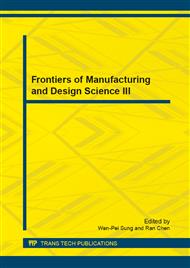p.46
p.50
p.55
p.60
p.64
p.69
p.73
p.77
p.81
Study of Mechanical Properties and Fracture Mechanism of a New High-Temperature Alloys
Abstract:
GH3230 is a new type of superalloy,it is the first study about it. This paper studied the high temperature mechanical properties of the GH3230 base metal and argon-arc welding joints by high temperature tensile test,high temperature creep test and SEM analyses. The results showed thatthe ultimate tensile strength of GH3230 argon-arc welding joints is about 85.6% of that of base metal under the same conditions. In the high temperature creep test, GH3230 argon-arc welding joints had a longer creep life than that of base metal. Both GH3230 base metal and argon-arc welding joints showed a ductile fracture. High temperature tensile fracture is cavities fracture and high temperature creep fracture is intergranular fracture. The deformation of GH3230 argon-arc welding joints is much more uniformited and smaller than that of base material, and GH3230 argon-arc welding joints has less cracks.
Info:
Periodical:
Pages:
64-68
Citation:
Online since:
December 2012
Authors:
Price:
Сopyright:
© 2013 Trans Tech Publications Ltd. All Rights Reserved
Share:
Citation:


